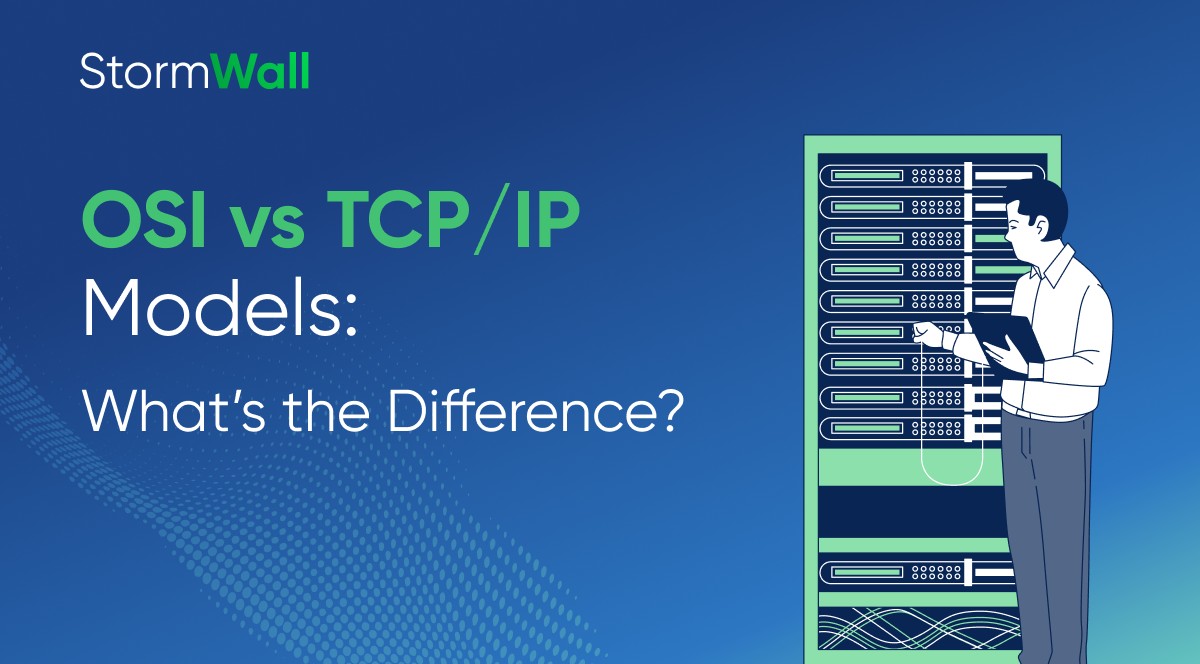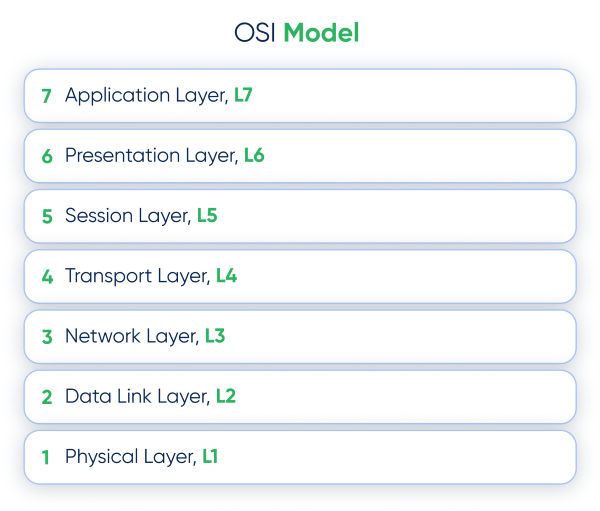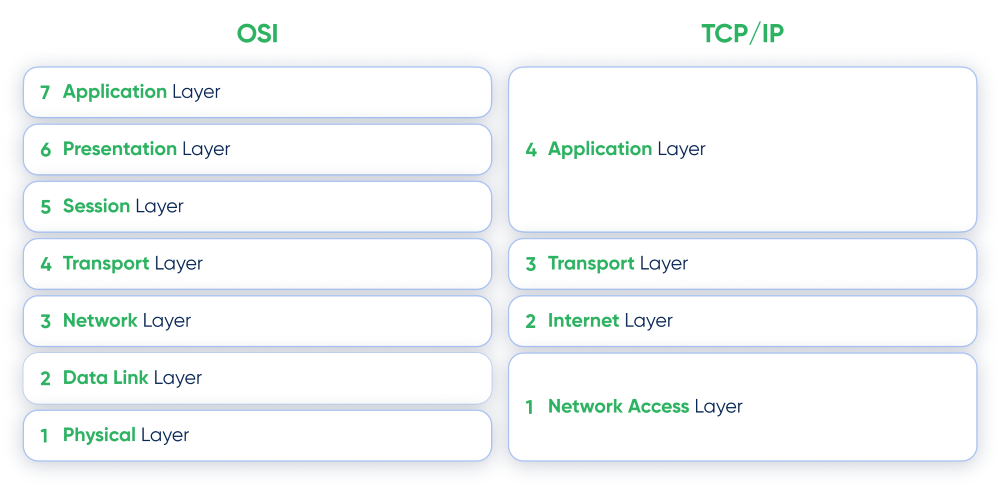When it comes to network engineering, the OSI and TCP/IP models are fundamental concepts. Both break networks into layers, simplifying data movement and device communication. These models are often referenced when discussing protocols, equipment, cybersecurity, and protection strategies.
But how are these models different, and when should you use each? Let’s break it down.

OSI: The Classic Model
The OSI model (Open Systems Interconnection) divides network processes into seven distinct layers. This structure helps pinpoint issues and understand specific parts of the network.
Why was the OSI model created? In the 1970s, network developers realized the need for standardization. Without it, devices and software from different manufacturers couldn’t work together. The OSI model was introduced in ISO 7498 to address this, defining seven key layers of network interaction.

Each layer of the OSI model has its specific tasks:
- Physical Layer (L1):
Handles the transmission of raw binary data (0s and 1s) through copper wires, fiber optics, or other data links connecting devices within a network. - Data Link Layer (L2):
Facilitates data transfer between two nodes within the same network. This layer manages switches and uses protocols like Ethernet. - Network Layer (L3):
Determines the best path for transmitting data packets between clients connected to the same or different networks. Common protocols at this layer include IP/IPv4/IPv6 from the TCP/IP stack. - Transport Layer (L4):
Ensures reliable data transfer from sender to receiver within a network. Protocols like TCP and UDP operate at this layer, guaranteeing data integrity and detecting errors during transport. - Session Layer (L5):
Manages the structure of communication sessions between users. One of the most common protocols at this level is PAP. - Presentation Layer (L6):
Converts data from applications into a format suitable for network transmission. Conversely, it translates data received from the network into a format applications can process, such as HTML, DOCX, or PNG. - Application Layer (L7):
Enables applications to use network services and identify users. Common protocols at this level include HTTP, EMAIL, and POP.
The OSI model is ideal for building, analyzing, and optimizing network architecture. Its detailed structure makes it invaluable for understanding complex processes and troubleshooting.
Read also: The 7-Layer OSI Model in Cybersecurity
TCP/IP: Simplifying Complexity
The TCP/IP model (Transmission Control Protocol/Internet Protocol) is considered to have a more practical focus. This makes sense, as the protocols named in the model became the foundation upon which the internet was built.
The TCP/IP model also divides network processes and data transmission methods into layers, but it has four layers, unlike OSI’s seven. A comparison between the models highlights key differences:
- The top three OSI layers (Application, Presentation, and Session) are merged into one Application Layer in TCP/IP. This simplification is practical because the tasks of these OSI layers are typically handled by software utilizing network resources.
- The Data Link and Physical layers of OSI are combined into a single Network Access Layer in TCP/IP. This layer manages both physical connectivity and the organization of data transmission channels.
The simplified approach of the TCP/IP model makes it better suited for practical use and implementation, while the OSI model remains a detailed foundation for in-depth network analysis and design.

Which Model Should You Use?
- Use TCP/IP when discussing day-to-day network operations or explaining basic connectivity.
- Use OSI for deeper dives into network architecture, equipment design, or cybersecurity, such as DDoS protection strategies.
At StormWall, we rely on the OSI model for cybersecurity and DDoS defense, thanks to its detailed structure.
Final thought: There’s no definitive answer to which model is “better.” Ultimately, choosing between OSI and TCP/IP depends on your context. The TCP/IP model serves as a framework for understanding how your network operates. However, if you want to dive deeper into network infrastructure and discuss its protection against cyberattacks in greater detail, it’s better to use the OSI approach.

DDoS Protection for Websites
- Activate protection in 10 minutes
- 24/7 technical support




















